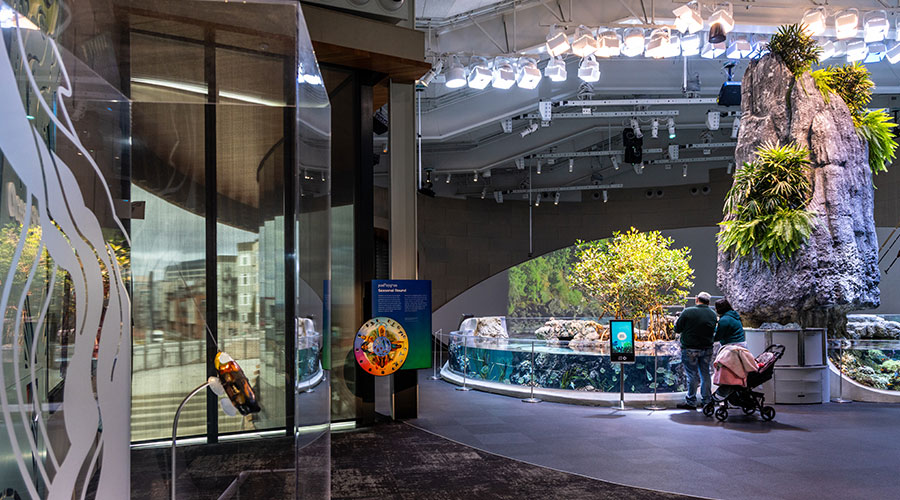University Takes Another Step to Improving Lighting Efficiency
Another challenge the university’s maintenance staff faced was efficiently changing bulbs in hard-to-reach areas around campus, such as tiered lecture halls, sports venues, recreation centers, and high-ceilinged hallways. Typically when bulbs go out in these settings, replacing them requires closing large areas to construct scaffolding or bring in lifts to change the bulbs.
The challenge led to the creation of the maintenance time reminder system, which incorporates occupancy sensors as meters. When the lights reach 70-80 percent of life expectancy, the building automation system alerts the crews, signaling time for mass relamping, which takes place during less disruptive times on campus, such as holiday breaks or summer sessions.
“We worked on a master list of about 60 rooms on campus that we considered to be mass relamping appropriate, and we told the crews that when these rooms have one, two, three or four bulbs going out, it’s probably time for us to start relamping,” Sankey says. “Then we said, ‘If you are going to install this particular light bulb, we know the bulb has approximately 30,000 hours of life. We also know when someone enters a room because the occupancy sensor goes on and we can track that.’
“We set the clock to remind us that when 25,000 hours of light has been disposed in the room, we’re going to send a reminder to figure out when you can take scaffolding in there or when to take a lift and mass relamp again.”
One of the gambles in this process is changing out bulbs that still have life remaining.
“At 75-80 percent, we need to remind ourselves (to start planning),” he says. “The reason we did that is (that in) some of these rooms, we can’t get into when we want to. We have to wait for a spring break, Christmas break or the summer. Some of these lecture halls are so heavily used that we might have to wait two months to get in there.
“That’s why we decided to start a little early with a pre-end-of-life estimate on the percentage. The cost of going back labor-wise to do onesies and twosies was another factor. We didn’t do a huge analysis, but we know that if you do that, it’s going to cost you.
“Another reason we did (relamping) is because if you change out three or four light bulbs in a room that has 100, you’re going to get some variation in color rendering. The older light bulbs are going to start fading off a little bit.”
Related Topics:














